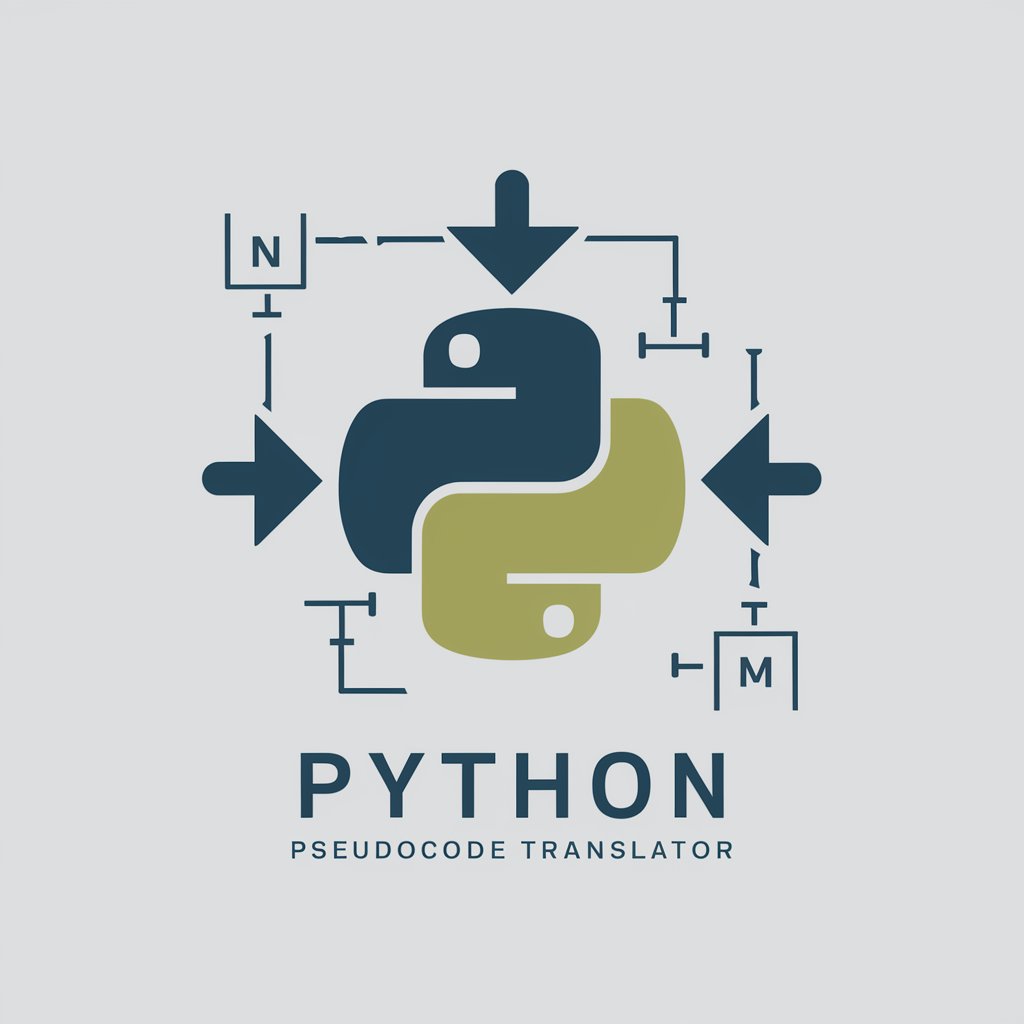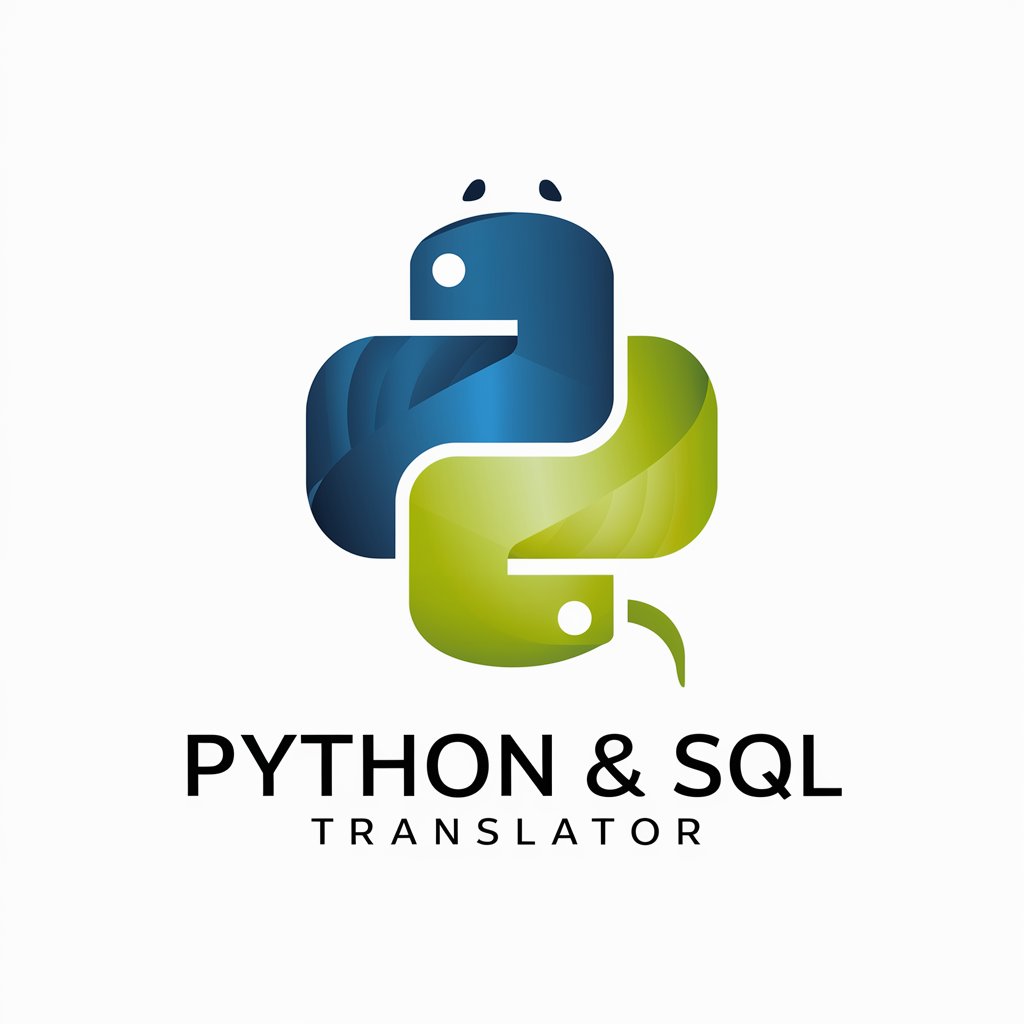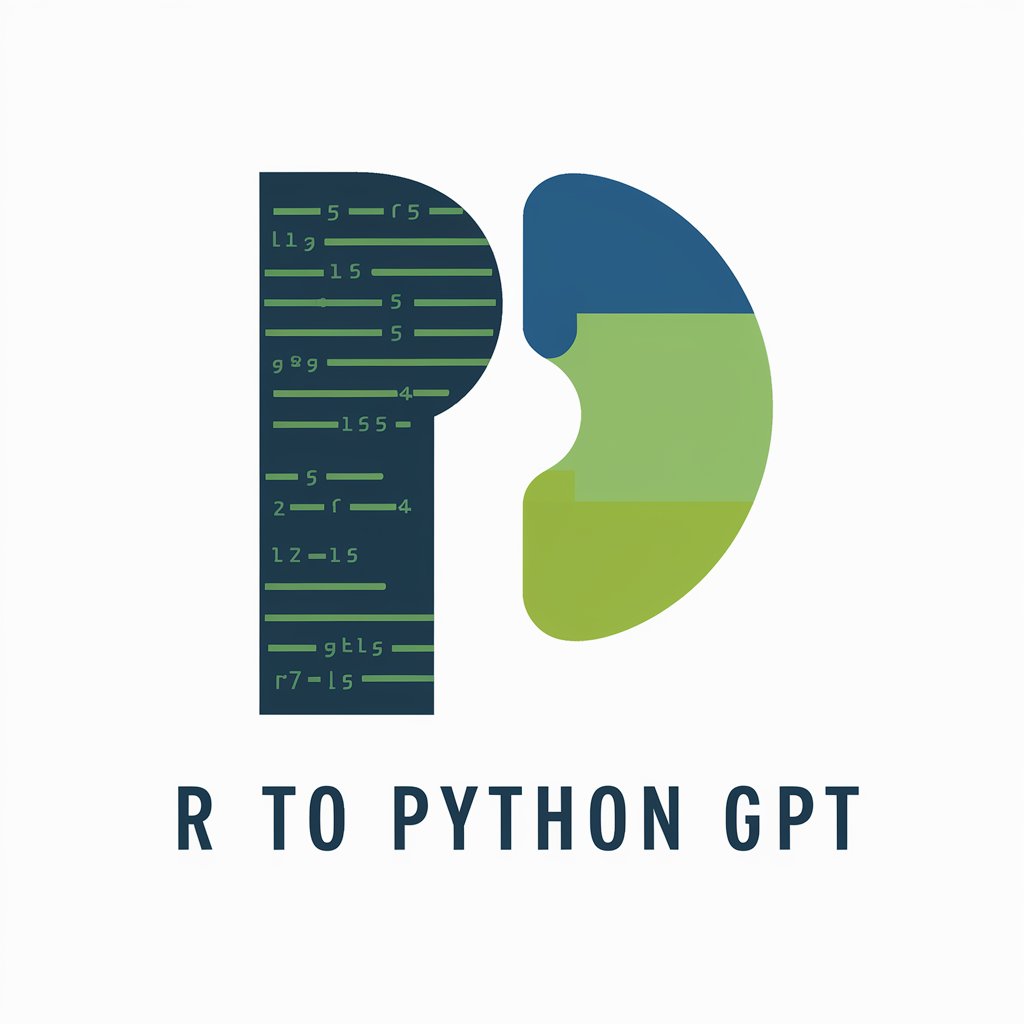
Python Pseudocode Translator - Pseudocode to Python Translation

Hello! Let's turn your pseudocode into clean, efficient Python.
Turning ideas into Python code, effortlessly.
Translate the following pseudocode into Python code:
How can I implement this algorithm in Python?
Convert this logic to Python, ensuring it's optimized and follows best practices:
Help me refactor this pseudocode into clean and efficient Python code:
Get Embed Code
Overview of Python Pseudocode Translator
Python Pseudocode Translator is designed as a sophisticated tool aimed at bridging the gap between conceptual algorithmic thinking and practical Python programming. It serves to translate pseudocode, a simplified form of programming instructions that abstracts away specific syntax, into executable Python code. This translation process not only converts instructions directly but also optimizes the resulting code to adhere to Pythonic conventions, ensuring readability, efficiency, and maintainability. For example, a user may input pseudocode for a sorting algorithm, and the Python Pseudocode Translator will output Python code that implements the algorithm efficiently, incorporating advanced programming constructs and error handling as necessary. Powered by ChatGPT-4o。

Core Functions and Real-World Applications
Translating Pseudocode to Python
Example
Input: 'For each item in list, if item is less than x, add to new_list'. Output: '[item for item in list if item < x]'
Scenario
A developer sketching out algorithm ideas on paper or brainstorming with colleagues can quickly turn those ideas into testable, efficient Python code.
Optimization and Pythonic Idioms
Example
Transforms basic loops into list comprehensions or generator expressions where applicable, ensuring code is concise and efficient.
Scenario
When refining a prototype script for better performance or readability, the translator can suggest more optimal Python constructs.
Error Handling and Dynamic Library Integration
Example
Automatically adds try-except blocks or suggests relevant library imports based on the pseudocode context.
Scenario
In developing a web scraping tool, the translator could guide on using requests or BeautifulSoup, including robust error handling for network issues.
Target User Groups
Developers and other technical professionals

How to Use Python Pseudocode Translator
Begin Your Journey
Access our tool directly through yeschat.ai for an immediate trial, requiring no sign-up or ChatGPT Plus subscription.
Define Your Pseudocode
Clearly articulate your pseudocode. Ensure it's structured and concise to facilitate an accurate translation.
Use the Translation Feature
Input your pseudocode into the provided field. For complex code, break it down into manageable parts for better accuracy.
Review and Refine
Examine the generated Python code. Utilize the feedback loop to refine your input and improve translation quality.
Apply Best Practices
For optimal results, familiarize yourself with Pythonic conventions and incorporate them into your pseudocode.
Try other advanced and practical GPTs
Narcissist Slayer
Empowering You Against Narcissism

Jargon Slayer
Simplifying complex terms with AI.

MedSchool Slayer
AI-driven medical learning companion

House Stager
Revolutionizing Home Staging with AI

Task Slayer
Transforming tasks into visual achievements

TaleTwirl: Demon Slayer Style
Crafting Your Child's Heroic Saga

Python Code Copilot
Empowering Python Excellence with AI

Buff Fello
Elevate Your Fitness Journey with AI

Design Buff
Empowering creativity with AI-driven design insights.

Movie Buff
Master movies with AI-powered trivia.

CFR Navigator for Ambient Air Monitoring Porgams
Streamline ambient air monitoring compliance and reporting with AI-driven insights.

Esperto Ambiente e Salute
Empowering informed environmental health decisions with AI.

Frequently Asked Questions about Python Pseudocode Translator
What is Python Pseudocode Translator?
It's an AI-powered tool designed to translate structured pseudocode into optimized, readable, and Pythonic code, aiding developers in turning concepts into executable Python scripts efficiently.
Can it handle complex algorithms?
Yes, it's built to manage complex algorithms by breaking down pseudocode into logical sections, ensuring accurate and efficient Python translations.
How accurate are the translations?
Translations aim for high accuracy, leveraging Pythonic idioms and best practices. However, the clarity and structure of the input pseudocode can affect the outcome.
Does it support all Python versions?
It focuses on compatibility with current Python versions, incorporating features and syntax that are widely supported and recommended.
Can I improve the translation quality?
Yes, refining your pseudocode for clarity and detail, and utilizing the feedback loop for iterative refinement, can significantly enhance translation quality.





